Back to School - Wines of Italy
Italy makes more wine than any other country. It is home to some of the most iconic fine wine names and produces a huge amount of uncomplicated table wine. With a huge number of native grape varieties - many of which are rarely found outside of Italy - Italian wines have a character all of their own, but can also be a little intimidating.
Yet the more people learn about Italian wine, the more they love it.
Just as France has Appellations, Italy has its own classification system for its top wines from a protected region:
Denominazione di Origine Controllata e Garantita (DOCG) is Italy's top quality tier. 73 regions are ranked as DOCG where wines meet both basic DOC standards along with more rigorous growing, aging, and quality specifications defined by each region.
Denominazione di Origine Controllata. (DOC) 329 officially designated wine regions. Wines must use official grape varieties and have minimum quality standards. Most DOC wines are decent everyday drinkers.
Indicazione di Geografica Tipica. (IGT/IGP) Most IGP are table wines from larger geographical areas but you'll also find regional wines made with non-Italian grapes including French-origin Merlot, Cabernet Franc and Syrah. These declassified grape wines can be of exceptional quality and often use a made-up name. The "Super Tuscans" from the Bolgheri region of Tuscany are a good example. IGP can offer great value.
We're going to look at 4 key regions and their DOCGs to introduce the wines and grapes varieties to look for.
Piedmont
This area in the North West of Italy is home to the iconic wines of Barolo, but that is not all it has to offer. It has an intermediate to cool climate which gives you a slightly shorter growing season and produces red wines that are more elegant, aromatic and earthy in style. The white wines are full of lively, refreshing acidity.
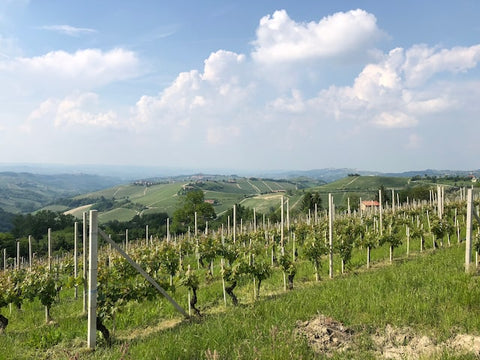
Barolo is south of the city of Alba and produces wines with the Nebbiolo grape that are pale in colour but high in tannins and acidity with a bold character. They are aged for a minimum of 18 months in oak barrels and not released until they 3+ years. The best Barolo can be aged for many years and the wines that forged its reputation are those over 10 years old as the tannins and acidity mellow a little and the complexity increases.
These are very expensive wines and only account for 3% of the regions production. If you wanted to try an example of Nebbiolo, you'll find younger, softer, good value wines from the wider Langhe Nebbiolo region which are a bit more Pinot Noir-esque.
Also around Barolo you'll find Moscato d'Asti, a sweet, semi-sparkling wine with lower alcohol (around 5%) made with the Moscato grape. It has flavours of rose, mandarin orange and lychee. There is also Asti Spumante which is fully sparkling and higher in alcohol (around 9%) but also sweet.
The DOCG of Barbera d'Asti is one of two that produce the best examples of Piedmont's most widely planted red grape, Barbera. This grape produces wines that offer black cherry anis and dried herbs flavour. They are riper, softer and more laid back than Nebbiolo based wines; and can be great value. Barberas with the word Supierore are the better quality examples.
The name of the town in the southeast of Piedmont is Gavi which is notable for making dry whites with citrussy fruit and green apple zing of acidity. These are made using the Cortese grape and have become very popular with UK wine lovers.
Key Grape Varieties:
Nebbiolo - a thin-skinned grape that can be tricky to grow, and produces wines with lots of complex delicate flavours like cherry, rose, anise and savoury leathery notes along with high acidity and tannin, which give it great ageing potential.
Barbera - a grape with lower tannins, producing good value wines with flavours of cherry, plum, blackberry and violet. These can be oaky and are best drank young.
Moscato - a very aromatic grape that produces sweet, sparkling wines that have flavours of citrus, orange blossom and stone fruit.
Cortese - flavours of appley fruit and citrus give this wine an immediately appealing character.
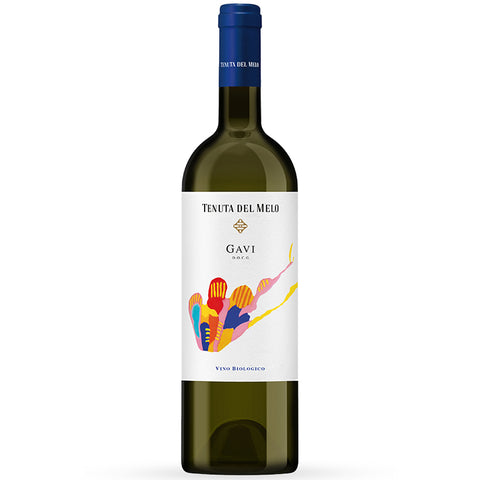
Where to start: Tenuta de Melo Gavi
This organic wine is a very tasty introduction to the Cortese grape and the style of Gavi. There are flavours of apple, honey and candied lemon peel and a gently mineral finish from a certified organic producer.
Veneto
Veneto is in the North of Italy at the foothills of the Alps. Its climate is influenced by the Adriatic Sea. Reds offer richer fruit with some elegance and the best white wines are found in the cooler areas in the hills.
This is the land of that other Italian wine icon, Amarone. It is the top wine of Valpolicella on the plains of the Lessini Mountains which uses Corvina grapes, often blended in various ways with other grapes, namely Rondinella, Corvinone and Molinara.
There are four wine styles in Valpolicella. The youngest simplest wines from the DOC are bright and lively with cherry fruit and light floral note. On the other end of the scale, there is a sweet red called Recioto made by drying the grapes out on mats in the sun to concentrate their sugars. These wines remain sweet as they have their fermentation interrupted by cooling the wine and filtering it to preserve their sweetness.
If the dried grapes are left to fully ferment, you end up with Amarone which is a very full bodied wine with high alcohol. This is aged for 2 years in oak or for 4 years for Riserva Amarone. You find flavours of plum, cherry, raisin, fig and chocolate in these wines and they retain enough acidity to be aged for several years.
The final style is Ripasso Valpolicella which is made by fermenting a young Valpolicella on the leftovers of an Amarone or Recioto. This gives the light wine extra body and complexity and combines the sour cherry flavours with soft, rich dried fruit and spice.
Veneto is also the place for the light, zesty whites of Soave DOC, made predominantly from the Garganega grape on the hillside vineyards east of Verona. It has flavours of melon, peach and orange zest and is ideal with a risotto. Soave is labelled Classico if it comes from the hills above Castello di Soave (the original site for the DOC before it was expanded).
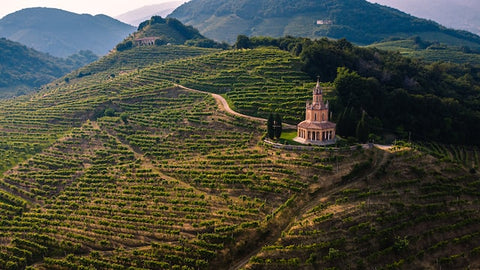
Prosecco is the famous (and now ubiquitous in the UK) sparkling wine of Veneto. Its DOC is close to Treviso, north of Venice and can only be made using the Glera grape variety. It differs from Champagne as it uses the Charmat (tank) method to ferment the wine. This offers more floral fruit, much less yeasty complexity and a light frothy fizz, making them easy to enjoy by a wide range of wine lovers. The best fruit comes from the Valdobbiadene DOCG area which is cooler than the surrounding area and makes wines that are crisp and delicious.
There are three sweetness levels for Prosecco. Dry - which has 17-32g/L of residual sugar, Extra Dry - has 12-17g/L and Brut - 0-12g/L which is the same as Brut Champagnes.
Key Grape Varieties:
Corvina - the grape of Valpolicella. This is blended with Rondinella, Molinara and Corvinone and produces wines with light sour cherry fruit when young but is also used to make richer, sweeter wines by drying the grapes partially in the sun using the process called Apassimiento.
Garganega - the grape used in Soave. You'll find flavours of peach, honeydew melon and orange zest with a little herbaceous note. It's a fresh white with a little extra smooth richness in the texture than grapes like Sauvignon Blanc. It is one of Italy's most widely-planted varieties and rarely found anywhere else.
Glera - this is the grape in every bottle of Prosecco. Flavours of apple, peach and melon often with a floral note. It has high acidity and makes wines that can be medium-dry to very dry and between 8.5-12.5% alcohol. It is grown almost entirely in Italy.
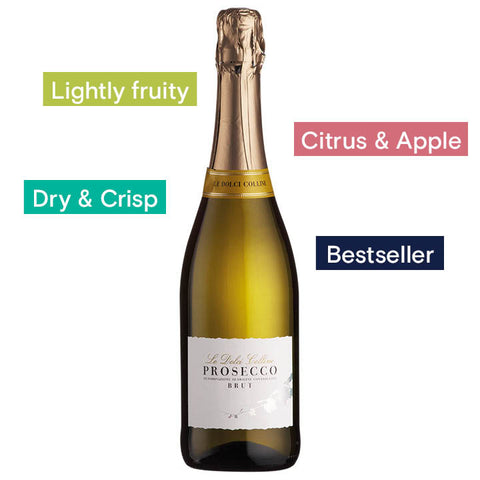
Where to start: Le Dolci Colline, Prosecco Spumante Brut NV
Kate Says - "If you often find Prosecco a little too sweet, this dry style is the one for you. It has the all fruitiness you expect but it's light and refreshing. No wonder it's been one of our bestsellers for years."
Tuscany
Tuscany in Central Italy is the home of Chianti and the warm, coastal Mediterranean climate here is ideal for growing red grapes. Sangiovese is the star and is the key grape in Chianti.
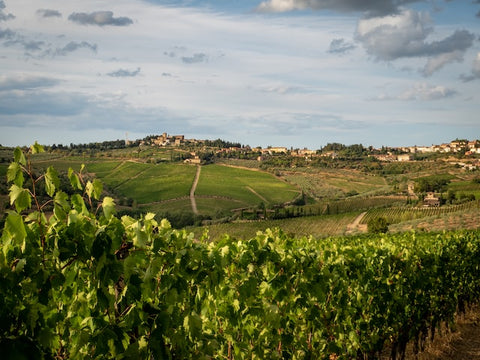
The wines of Chianti are varied. Some, like those from the Chianti Classico area are savoury, earthy and rustic, while others are riper and fruitier. The wines are all aged for a minimum of 4 months in large oak barrels that don't add much flavour. This rises to 10 months for Chianti Superiore and 2 years for Chianti Riserva. These are some of the most quintessentially Italian wines with flavours of tomato and herbs joining the fruit. They have lots of acidity and are very food friendly.
The wines of the prestigious (and expensive) DOCG Brunello Di Montalcino are made using only Sangiovese. The climate in Montalcino is among the warmest and driest in the area, enabling very ripe grapes with great ageworthy structure. These wines are bigger and more full bodied than Chianti and must be aged for a minimum of 4 years (or 5 for Riserva wines)
There are other wines made outside of the DOCG rules in Tuscany that blend Cabernet Sauvignon, Merlot and Cabernet Franc in with the local grapes. These are known as Super Tuscans and are labelled under the IGT classification. Some of the best examples from the Bolgheri DOC have become very famous and sought after in their own right, attracting acclaim and a high demand that has seen their prices soar.
Tuscany is also known for it's sweet wine Vin Santo. Known as 'Holy Wine' it uses grapes that have been dried on straw mats to concentrate the sugars and can take up to 4 years to ferment. It has flavours of raisin, fig, almond and toffee is often paired with biscotti biscuits.
Key Grape Variety:
Sangiovese - this think skinned grape with high acidity and tannins has fruit flavours of tart cherry, red plum and strawberry mingling with savoury flavours of oregano, thyme, smoke, tomato and tobacco as they develop.
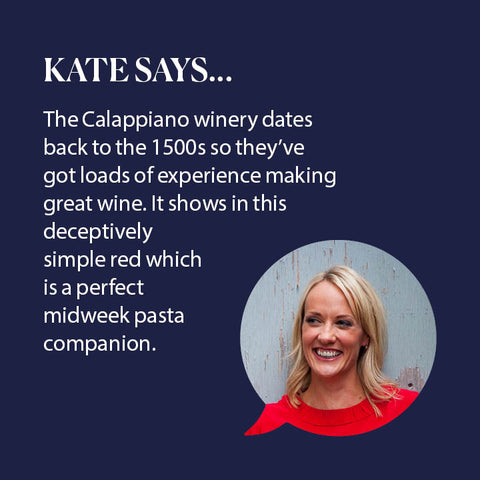
Where to start - Calappiano Sangiovese Toscana
Kate Says - "The Calappiano winery dates back to the 1500s so they've got loads of experience making great wine. It shows in this soft and fruity red which is a perfect midweek pasta companion. It's got some pretty red cherry and blueberry fruit and enough acidity to match a tomato sauce."
Puglia
This area is referred to as the heel of Italy and is among the warmest regions which are conditions that produce riper, sweeter fruit flavours and fuller bodied wines. This region has become a source for excellent value reds and has a few notable DOCs.
In the Salento peninsula you'll find Salice Salentino. These wines use the Negroamaro grape that is full bodied but not heavily tannic or acidic and has ripe plum, baked raspberry and warm spice like cinnamon and allspice.
Primitivo is the other grape that thrives in this area and some of the best examples can be found in Manduria. Primitivo is the Italian name for the Zinfandel grape and here it is matured in oak to give it toasty vanilla notes to add to the big, luscious, sweet, ripe blueberry and blackberry fruit
Key grape varieties:
Negroamaro - the true taste of Puglia, this red grape is almost exclusively grown in Southern Italy and makes wines that are full bodied and have lots of ripe black cherry, plum prune and herbaceous flavours.
Primitivo - this grape is originally from Croatia and is known at Zinfandel in the USA. It ripens early with lots of natural sugars so its no surprise it creates big, jammy fruit-forward red wines with flavours of figs, blueberry and baked blackberry, as well as some dried fruit and savoury complexity.
Where to start: Cantine Sampietrana, Brindisi Riserva
Kate Says: "From the heel of Italy, this Negroamaro blend is just a belter of a wine. Everyone who tries it loves it. Concentrated dark fruit, richness from oak and velvety smooth. Try it with a spicy pasta dish."
This is really just scratching the surface of Italian wines. We hope that you can begin your Italian wine adventure with us and if you want to know more, we'd more than happy to offer more tips and recommendations.
How to read an Italian Wine Label
Italian wine labels are the most challenging to understand because there is no single rule that defines how they're labelled. However these are the most common things to look out for.

Wine Myth - Busted
The deeper the punt under the bottle, the better the wine.
First of all, let's explain what a punt is.
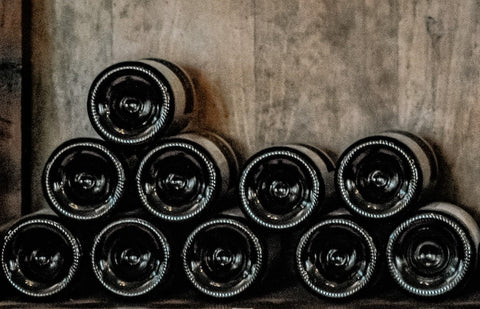
The indent in the base of bottle of wine is referred to as the punt. This is related to the method of blowing glass bottles by hand that was done using a blowpipe and a pontil or ponty - an iron rod used to hold and shape the soft glass. The pontil was attached at the base of the bottle and left a punt mark during the process.
It had the benefit of adding extra stability and strength to the bottles, allowing it to hold high pressure - which was particularly important for sparkling wines.
We have on numerous occasions been asked by customers whether it's true that the bigger the punt is on the bottle, the better the wine inside must be.
This seems to have been marketing message that producers have used to customers as a way of selling their own wines, where this rule was true. And on the surface it can make some sense. Bottles with deeper punts are bigger and heavier, so they must be more expensive. You'd only put your best wine in the most expensive glass bottles bottles surely?
Unfortunately this falls apart at the the most basic level of scrutiny, especially when you look at white wines.
However punts do have some other benefits. They can help collect sediment at the bottom of an unfiltered bottle, aiding the riddling process in Champagne and are used by sommeliers to help pour wine in a sophisticated way.
In a day when we are looking to be more conscious of our environment however, large punts on heavy bottles begin to look like an unnecessary excess. Here's hoping more producers will begin to end the vanity of the big punt and move to lighter glass bottles in future.







Leave a comment (all fields required)